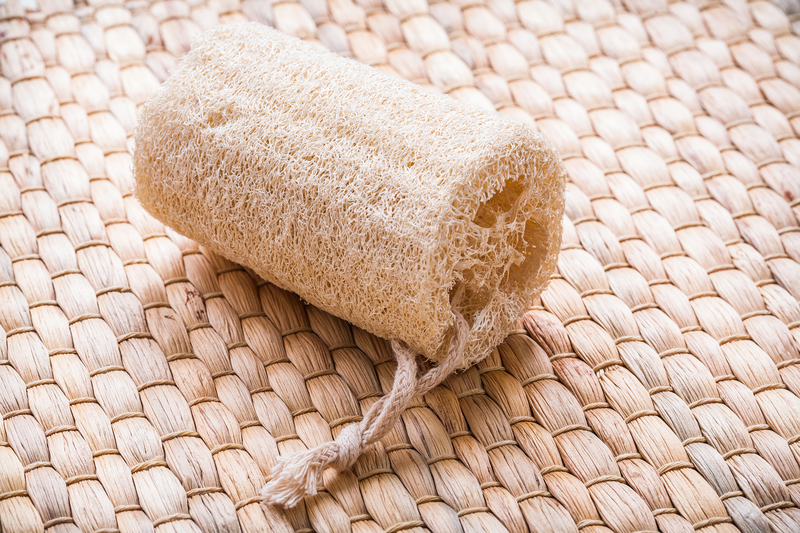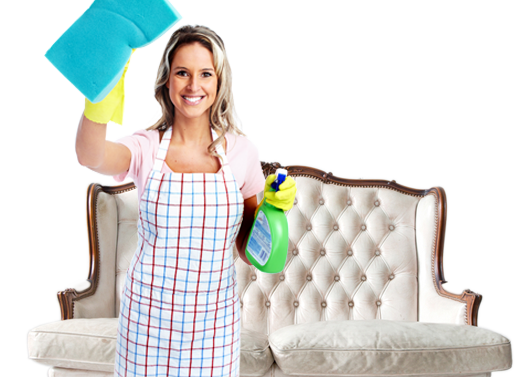Keep Your Bathroom Mold-Free with These Handy Tips
Posted on 12/09/2025
Keep Your Bathroom Mold-Free with These Handy Tips
Mold in the bathroom is an extremely common problem faced by homeowners and apartment dwellers alike. Bathrooms provide the perfect environment for mold, thanks to constant humidity, poor ventilation, and damp surfaces. Mold growth is not just unsightly but can also pose health risks, especially for those with allergies or respiratory issues. But don't worry--you can take actionable steps to keep your bathroom mold-free, fresh, and healthy.
Understanding Why Mold Loves Bathrooms
Before you can prevent bathroom mold, it's important to understand what makes bathrooms such a mold hotspot. Bathrooms are almost always warm and moist--the two main conditions mold spores need to thrive. Add in organic matter from soap residue and fabrics like towels, and you've got a recipe for rapid mold growth.
The Health Risks of Mold in Bathrooms
Mold exposure in the bathroom can exacerbate asthma, trigger allergies, and in rare cases, cause respiratory infections. Even if you don't react strongly to mold, it's still wise to avoid it in your living spaces. Keeping your bathroom free from mold growth ensures a healthier environment for you and your family.

Preventive Strategies: Keeping Your Bathroom Mold-Free
Taking early preventive measures is key in ensuring you maintain a mold-free bathroom. Here are some handy, easy-to-implement tips to stop mold before it starts:
1. Maximize Bathroom Ventilation
- Use exhaust fans every time you bathe or shower. Let them run for at least 20 minutes after you finish to remove excess moisture.
- If your bathroom lacks an exhaust fan, open windows to let fresh air circulate and damp air escape.
- Keep the bathroom door slightly open during and after showering to improve airflow.
2. Control Humidity Levels
- Invest in a bathroom dehumidifier if you have recurring moisture issues--particularly in small or windowless bathrooms.
- Check and repair leaks in faucets, pipes, or showerheads that cause extra dampness.
- Maintain indoor humidity at or below 50% using a hygrometer to monitor.
3. Clean and Dry Surfaces Regularly
- Wipe down wet surfaces after each use. Pay attention to shower tiles, bathtub rims, and bathroom walls.
- Dry or squeegee shower walls, glass doors, and floors after bathing to remove excess water.
- Wash bathmats, shower curtains, and towels at least once a week to prevent mildew buildup.
4. Improve Lighting in Your Bathroom
- Mold prefers dim and dark places. Install bright LED lights or opt for natural light if possible.
- If there is a window, keep curtains open during the day to let in sunlight--which naturally disinfects surfaces.
5. Select Mold-Resistant Materials
- Opt for mold-resistant paint and caulk on bathroom walls, ceilings, and around the tub or sink.
- Choose water-resistant flooring and wall panels, like ceramic tile or vinyl, instead of carpet or wood.
- Install glass shower doors instead of curtains, as they're less likely to harbor moisture.
Cleaning and Maintenance: Combatting Existing Bathroom Mold
No matter how careful you are, your bathroom may still develop some patches of mold or mildew over time. The trick is to act fast and use the right products and cleaning methods to make your bathroom mold-free again.
Step-By-Step Guide to Removing Mold from Your Bathroom
- Identify affected areas. Check corners, grout, ceiling, shower caulking, and under sinks for any sign of dark or fuzzy spots.
- Prepare your cleaning solution. White vinegar, baking soda, or hydrogen peroxide are effective and safe for most surfaces. Commercial mold removers also work if you prefer.
- Wear protective gloves and a mask if needed. Mold spores can irritate your skin and lungs.
- Spray or apply the cleaner directly on moldy spots. Let it sit for 10-15 minutes to penetrate and break down the growth.
- Scrub with a stiff brush or sponge. Old toothbrushes are perfect for cleaning grout lines and corners.
- Rinse the area thoroughly and wipe dry with a clean towel.
Natural Solutions to Keep Bathrooms Mold-Free
- White vinegar: Spritz undiluted vinegar on problem areas weekly to prevent mold regrowth.
- Baking soda: Mix with water to create a paste for scrubbing grout and tiles.
- Tea tree oil: Dilute a few drops in water and spray on surfaces as a natural antifungal remedy.
- Lemon juice: Its acidic properties make it effective at combating mild mold.
Tip: Always dry cleaned surfaces thoroughly afterward to inhibit new mold formation.
Smart Bathroom Habits for Ongoing Mold Prevention
Good daily habits play a significant role in keeping your bathroom permanently mold-free. Adopt these simple routines for lasting mold prevention:
- Hang towels and mats to dry after every use--don't leave them crumpled on the floor or over the tub.
- Leave shower doors or curtains open after bathing to facilitate air circulation.
- Regularly check behind and under sinks for leaks and signs of moisture accumulation.
- Keep toilet lids closed to limit excess moisture in the air.
- Store toiletries in ventilated baskets instead of closed boxes or cabinets that trap moisture.
Choosing the Best Mold Prevention Products for Bathrooms
Some of the most effective ways to keep your bathroom mold-free involve using specialized cleaning and prevention products. Here's a rundown of what works--and why:
Anti-Mold Shower and Tile Sprays
- Daily shower sprays create a shield on tiles and glass, discouraging mold and mildew buildup.
- Choose products that are bleach-free and specifically designed for mold prevention.
Mold-Resistant Caulk & Grout
- Old, cracked caulk is a haven for mold. Remove and replace it with mold-resistant silicone caulk to provide long-lasting protection.
- Use grout sealers to prevent moisture infiltration in tiles and minimize mold-friendly crevices.
Moisture Absorbers & Dehumidifiers
- Desiccant packs, moisture absorbers, or electric dehumidifiers dramatically decrease ambient moisture in problem bathrooms.
- These solutions work best in poorly ventilated or windowless bathrooms where natural drying is tough.
What to Do if You Have a Persistent Mold Problem
In some cases, despite your best efforts, bathroom mold keeps coming back. This typically means there's a hidden moisture source or deeper problem:
- Check for hidden leaks in your walls, plumbing, or under the floor.
- Consider waterproofing your bathroom if you're renovating--especially in older homes.
- If you spot large patches (over 10 square feet) of mold, contact a professional mold remediation specialist for proper treatment and removal.

FAQs: Keeping Your Bathroom Mold-Free
How often should I clean my bathroom to prevent mold?
Weekly deep cleaning is recommended for all high-moisture areas. However, simple daily tasks such as drying the shower and washing towels also contribute greatly to mold prevention.
Is bleach the best way to remove bathroom mold?
While bleach can kill mold on non-porous surfaces, it's harsh and not always necessary. Vinegar or hydrogen peroxide are gentler, effective alternatives--particularly for light or early-stage mold.
Can mold in the bathroom make you sick?
Yes, exposure to mold spores can trigger allergies, worsen asthma, and may occasionally cause infections. Preventing mold ensures a safer, healthier indoor space.
Why does mold keep coming back in my bathroom?
Persistent mold indicates ongoing moisture issues, such as hidden leaks, insufficient ventilation, or porous materials that hold water. Address the root cause for a permanent solution.
Conclusion: Enjoy a Spotless, Healthy Bathroom
Maintaining a mold-free bathroom doesn't have to be a struggle. By incorporating proactive habits, choosing the right materials, and cleaning regularly, you can stay ahead of mold growth for good. Whether you're dealing with a new apartment or your forever home, these handy tips will help you enjoy a cleaner, healthier, and fresher bathroom--every single day.
- Maximize ventilation and control humidity.
- Clean, dry, and declutter prone areas weekly.
- Act quickly at the first sign of mold.
- Upgrade to mold-resistant paints, caulks, and tiles.
Say goodbye to unsightly patches, musty smells, and health hazards--implement these strategies today and keep your bathroom mold-free!





